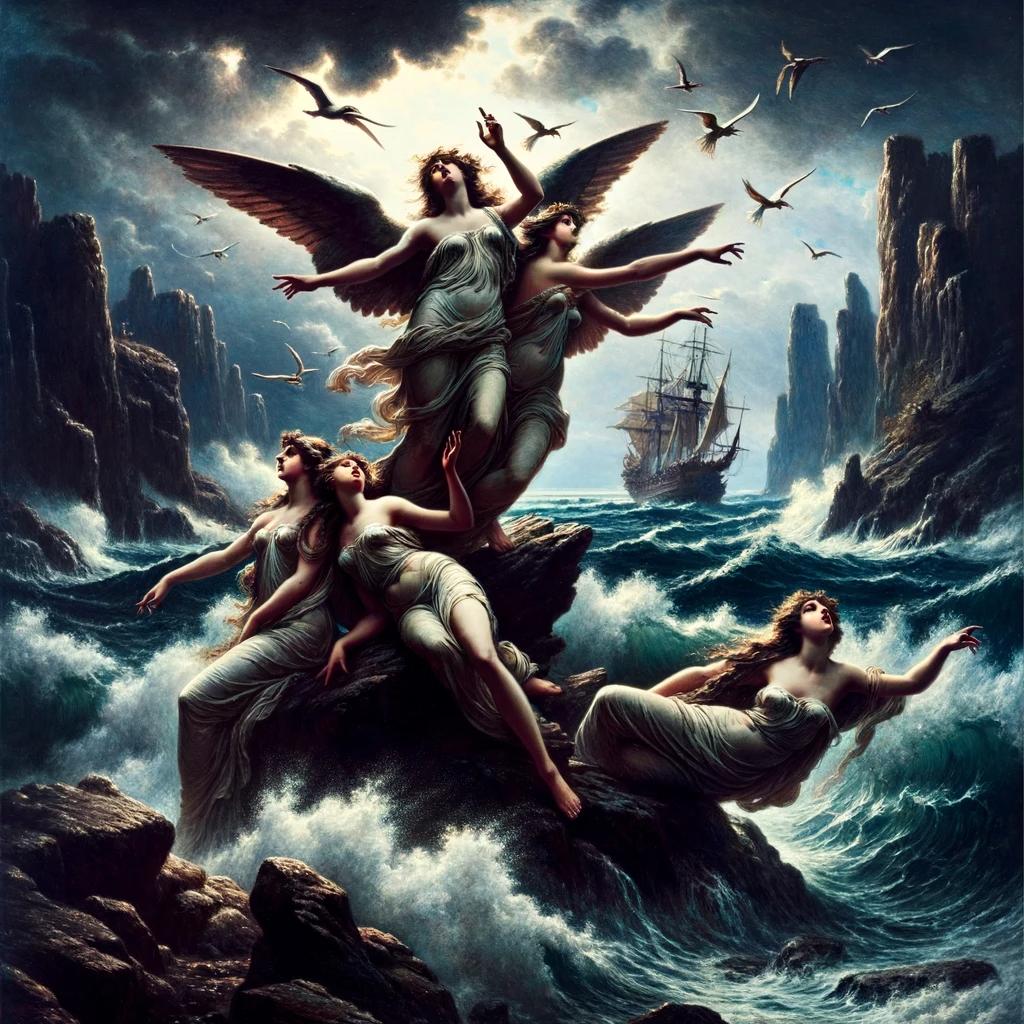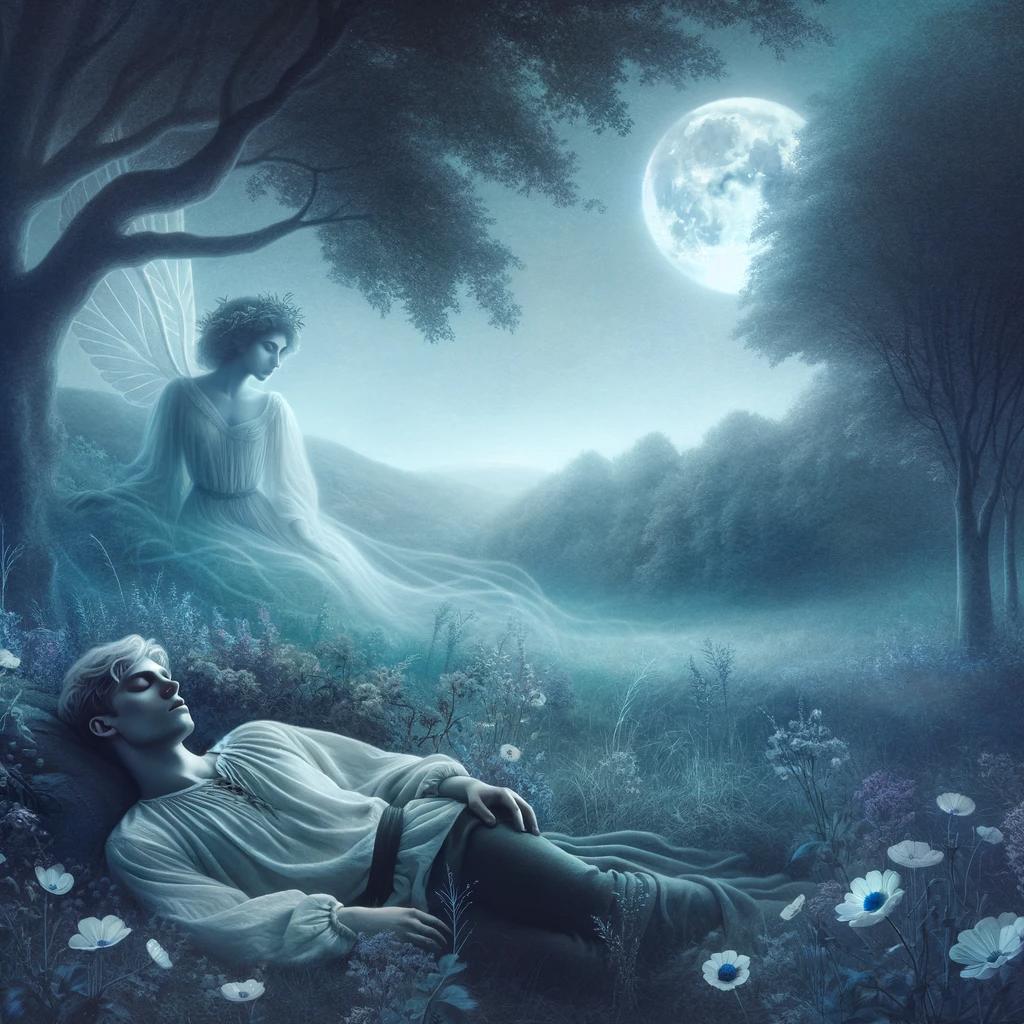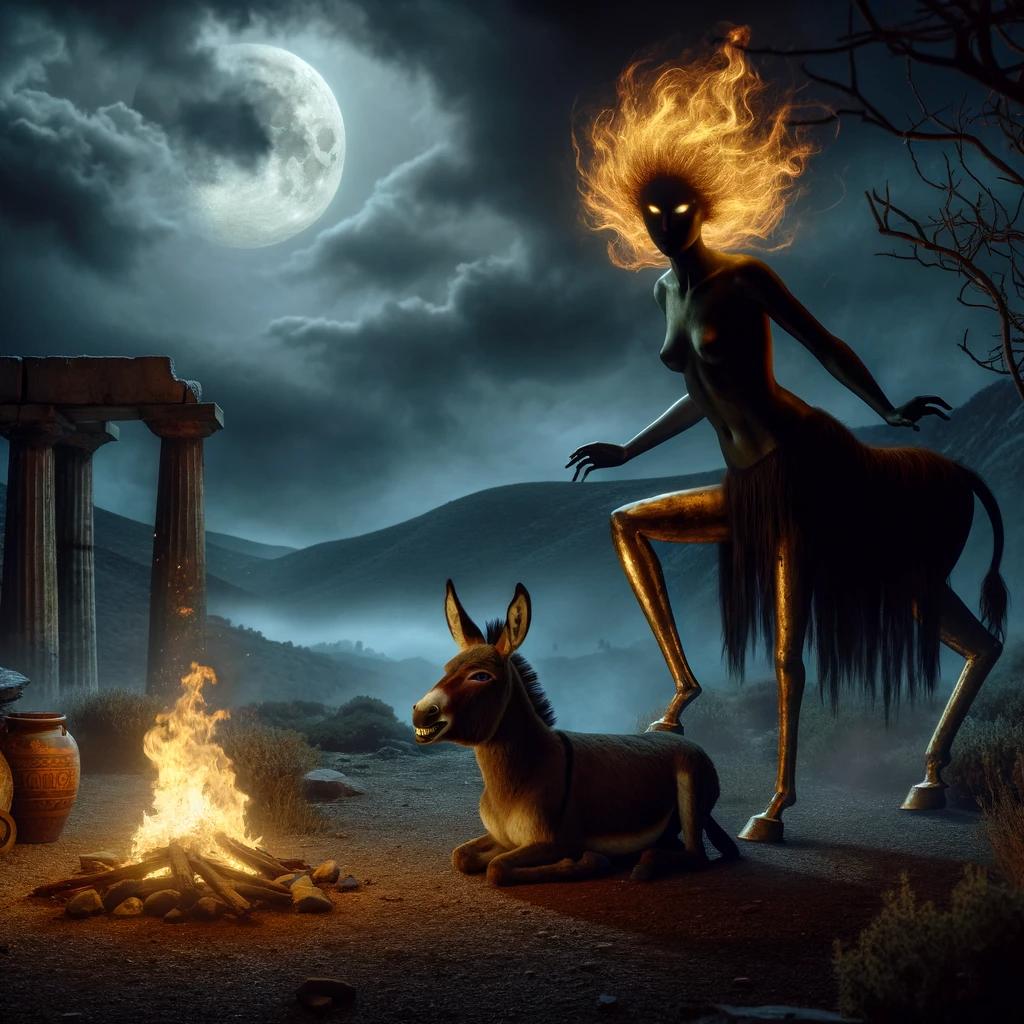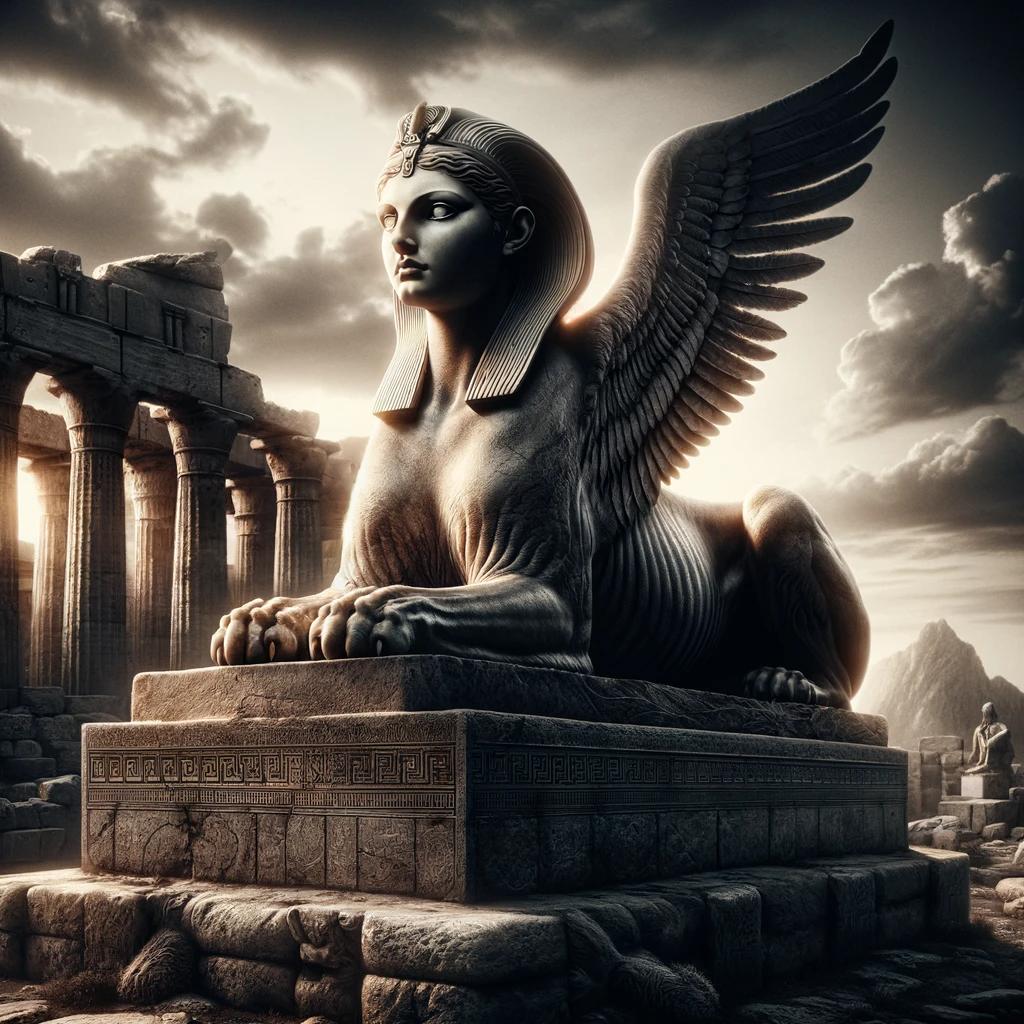The Sirens in Greek Mythology: Enduring Fascination and Peril
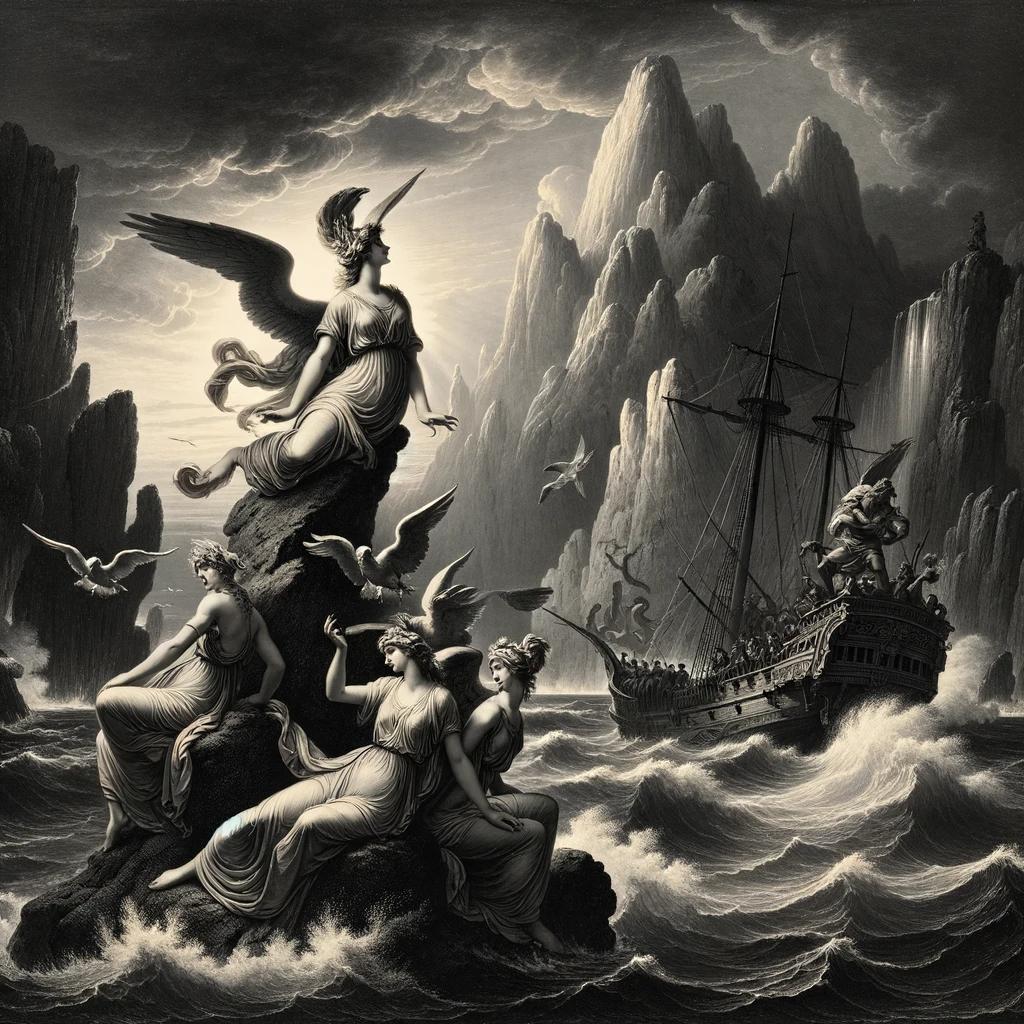
The Sirens in Greek Mythology, with their haunting allure and treacherous charms, have captivated audiences through the ages. These mythical creatures, depicted as hybrid beings with the bodies of birds and the heads of women, lured sailors to their demise with their enchanting melodies.
From their origins in ancient Greek mythology to their enduring influence in art, literature, and popular culture, the Sirens continue to intrigue and fascinate with their timeless allure and the peril they pose to those who dare to listen.
Explore the rich tapestry of Siren mythology, the heroic encounters with these seductive beings, and their lasting impact on various artistic mediums.
The Sirens in Greek Mythology
The Sirens in Greek mythology are mythical creatures that have captivated imaginations throughout history. These enchanting beings were believed to have the body of a bird and the head of a woman.
They resided on rocky islands, using their sweet melodies to lure unsuspecting sailors to their doom.
Origins and Background
The origins of the Sirens can be traced back to ancient Greek mythology. While their exact origins are debated, they are often associated with the sea and its treacherous nature.
They were known to reside on the island of Anthemoessa, but their presence was not confined to a single location.
Mythological Depictions of Sirens
The Sirens were depicted as captivating creatures, with the power to manipulate and tempt mortals with their song. According to mythological accounts, their mesmerizing voices were so enchanting that sailors could not resist their allure.
The Sirens were known to be exceedingly beautiful, and their alluring appearance added to their seductive powers.
Sirens vs. Mermaids: Similarities and Differences
While often mistaken for mermaids, Sirens and mermaids are distinct mythical creatures. Both have ties to the sea, but their characteristics and narratives differ. Mermaids are typically portrayed as half-fish, half-human creatures, while Sirens have the body of a bird and the head of a woman.
Mermaids are often depicted as benevolent and beautiful, while Sirens are seen as dangerous and deadly temptresses.
- Sirens have bird-like bodies and sing to lure sailors to their doom.
- Mermaids have fish tails and are associated with beauty and benevolence.
- Sirens are depicted as dangerous and seductive, while mermaids often symbolize compassion and protection.
- Both Sirens and mermaids have fascinated storytellers and artists throughout history.
While they share similarities as mythical creatures of the sea, it is crucial to differentiate between Sirens and mermaids in Greek mythology.
Fascination and Influence in Art and Literature
Exploring the captivating allure of the Sirens in Greek mythology, their influence can be found in various artistic expressions and literary works. Their iconic representation has transformed over time, inspiring artists and writers alike.
From classical depictions to ancient texts and Christian art, the Sirens continue to captivate and intrigue.
Classical Representations of Sirens
In classical art, Sirens were often depicted as majestic bird-like creatures with the heads of women, adorned with feathers and scaly feet. They were portrayed engaging with musical instruments such as the lyre, the cithara, and the aulos.
These representations showcased their seductive nature and their ability to entice sailors with their enchanting melodies.
Sirens in Ancient Texts and Mythology
Sirens have a significant presence in ancient Greek texts and mythology. They are mentioned in works of renowned playwrights such as Aeschylus and Euripides, highlighting their treacherous nature and their power to lure sailors to their doom.
These mythical creatures were depicted as sinister temptresses, bringing about the destruction of those who succumbed to their seductive songs.
Sirens in Christian and Medieval Art
During the early Christian era and throughout the medieval period, the concept of Sirens took on symbolic meanings in religious art. Sirens were portrayed as a representation of the dangerous temptation that women were believed to embody.
Christian artists used their imagery to caution against the allure of worldly desires and the perils of succumbing to temptation.
Through classical representations, ancient texts, and religious art, the Sirens’ allure and perilous nature have left an indelible mark on the creative world.
Their influence can be observed in various art forms, provoking fascination and contemplation of the dangers that lie within temptation.
The Peril of the Siren’s Song
As told in the epic poem of Homer’s Odyssey, the legends of the Sirens continue to captivate and warn of their perilous song. These seductive creatures possessed voices so enchanting that they lured sailors to their untimely demise.
Odysseus, the heroic protagonist of the Odyssey, encountered the Sirens during his long voyage back to Ithaca.
The Sirens in Homer’s Odyssey
In Book XII of the Odyssey, Odysseus receives a warning from Circe about the treacherous allure of the Sirens. These enchanting beings dwell on a rocky island and entice passing sailors with their irresistible melodies.
Any sailor who succumbs to their song would become enthralled, steering their ships towards the perilous rocks, resulting in their destruction.
Odysseus and the Sirens: A Heroic Encounter
To protect his crew from the Sirens’ lure, Odysseus devises an ingenious plan. He orders his men to plug their ears with beeswax to prevent them from hearing the Sirens’ song.
As for himself, the ever-curious Odysseus desires to experience the enchantment but wishes to avoid the calamity. Therefore, he has his crew tie him securely to the mast of the ship, commanding them not to release him, regardless of his pleas or struggles.
As the ship sails closer to the Sirens, Odysseus, unable to resist their allure, becomes mesmerized by their enticing song. Yet, thanks to his foresight and the loyalty of his crew, he remains securely bound while the ship passes by unharmed.
The hero’s encounter with the Sirens serves as a testament to his cunning, self-restraint, and triumph over temptation.
The Symbolism of Siren’s Song and Temptation
The Sirens’ irresistible song symbolizes the power of temptation, representing the allure and dangers of desires. The Sirens embody the eternal struggle between reason and desire, offering a warning against succumbing to temptations that could lead to destruction or dire consequences.
Odysseus’ victory over the Sirens highlights the importance of self-control, discipline, and prioritizing long-term goals over momentary pleasures.
- The Sirens’ song as a symbol of seduction and temptation
- Odysseus’ triumph as a metaphor for the triumph of willpower
- The enduring relevance of the Sirens’ symbolism in modern society
The tale of Odysseus and the Sirens continues to resonate, serving as a cautionary tale of the perils that lie in succumbing to alluring but ultimately destructive distractions.
The presence of the Sirens in Greek mythology reminds us of the value of self-restraint, awareness of our own weaknesses, and the importance of staying on the path towards our goals, even when facing overwhelming temptation.
Evolution of Sirens in Popular Culture
The allure and mystery of the Sirens in Greek mythology have captivated popular culture throughout history. From modern fantasy and fiction to film and television, the Sirens have undergone various interpretations and reimaginings, cementing their lasting influence in popular culture.
Sirens in Modern Fantasy and Fiction
Sirens continue to be prominent figures in modern fantasy and fiction. Writers and authors have taken inspiration from Greek mythology to craft intriguing stories revolving around these seductive creatures. In contemporary literature, Sirens are often portrayed as complex characters, exploring themes of temptation, identity, and redemption.
Their enchanting voices and lure of danger continue to mesmerize readers, leaving an indelible mark on the literary landscape.
Sirens in Film and Television
The visual medium of film and television has also embraced the mystique of the Sirens. From adaptations of classical works to original stories, Sirens have made appearances in various cinematic and television productions.
Directors and screenwriters have reimagined these mythological creatures, showcasing their beauty, power, and treacherous nature on the big and small screen. Whether as antagonists or anti-heroes, Sirens’ influence in visual storytelling remains significant.
Contemporary Interpretations and Reimaginings
As popular culture continues to evolve, so do the interpretations of the Sirens. Artists, musicians, and creators of all kinds have incorporated Sirens into their works, pushing the boundaries of traditional representations.
Through diverse art forms such as music, visual arts, performance arts, and fashion, contemporary interpretations of Sirens explore new perspectives, symbolism, and societal themes. These reimaginings breathe new life into the ancient myth, captivating audiences and sparking conversations.
From the pages of books to the screens we watch, the evolution of Sirens in popular culture showcases the timeless allure and enduring fascination with these mythical creatures. With each iteration, the Sirens continue to enchant and captivate, evolving alongside the ever-changing artistic landscape.
.











